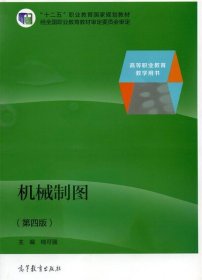
量子化学
¥ 210.48 ¥ 119 九五品
仅1件
浙江杭州
认证卖家担保交易快速发货售后保障
作者洛韦 (John P.Lowe), Kirk A.Peter
出版社世界图书出版公司
ISBN9787510035074
出版时间2011-06
版次1
装帧平装
开本16开
纸张胶版纸
页数703页
定价119元
上书时间2024-08-01
- 最新上架
商品详情
- 品相描述:九五品
- 商品描述
-
基本信息
书名:量子化学
定价:119.00元
作者:洛韦 (John P.Lowe), Kirk A.Peterson
出版社:世界图书出版公司
出版日期:2011-06-01
ISBN:9787510035074
字数:
页码:703
版次:1
装帧:平装
开本:16开
商品重量:
编辑推荐
《量子化学(第3版)》是由世界图书出版公司出版的。
内容提要
《量子化学(第3版)》在写作风格上是第二版的延续,内容上进行了扩充,更新,讲解上更加详细。结合数学新进展,在概念上达到清晰易懂。和同类型的书相比,《量子化学(第3版)》的优点是概念讲述地十分透彻,让读者重新认识各种计算方法的重要性。每章末都有习题,是学习量子化学研究生水平入门书籍,也很适合该专业的老师作为参考书。目次:经典波和时间独立schr?dinger波方程;一些简单系统的量子力学;谐振子;类离子,角动量和刚量转动;多电子原子;量子力学定理和假设;变分法;简单hückel方法和应用;线性变分法的矩阵公式;扩展hückel方法;scf-lcao-mo方法和扩展;时间独立rayleigh-schr?dinger扰动法;群论;定性分子轨道理论;周期系统的分子轨道。读者对象:物理、化学以及这两专业交叉学科的研究生,教师和科研人员。
目录
preface to the third editionpreface to the second editionpreface to the first edition1classical waves and the time-independent schrodinger wave equation1-1 introduction1-2 waves1-3 the classical wave equation1-4 standing waves in a clamped string1-5 light as an electromagnetic wave1-6 the photoelectric effect1-7 the wave nature of matter1-8 a diffraction experiment with electrons1-9 schrodinger's time-independent wave equation1-10 conditions on1-11 some insight into the schrodinger equation1-12 summaryproblemsmultiple choice questionsreference2 quantum mechanics of some simple systems2-1 the particle in a one-dimensional "box".2-2 detailed examination of particle-in-a-box solutions2-3 the particle in a one-dimensional "box" with one finite wall2-4 the particle in an infinite "box" with a finite central barrier2-5 the free particle in one dimension2-6 the particle in a ring of constant potential2-7 the particle in a three-dimensional box: separation of variables2-8 the scattering of particles in one dimension2-9 summaryproblemsmultiple choice questionsreferences3 the one-dimensional harmonic oscillator3-1 introduction3-2 some characteristics of the classical one-dimensional harmonic oscillator3-3 the quantum-mechanical harmonic oscillator3-4 solution of the harmonic oscillator schrtdinger equation3-5 quantum-mechanical average value of the potential energy3-6 vibrations of diatomic molecules3-7 summaryproblemsmultiple choice questions4 the hydrogenlike ion, angular momentum, and the rigid rotor4-1 the schrodinger equation and the nature of its solutions4-2 separation of variables4-3 solution of the and equations4-4 atomic units4-5 angular momentum and spherical harmonics4-6 angular momentum and magnetic moment4-7 angular momentum in molecular rotation——the rigid rotor4-8 summaryproblemsmultiple choice questionsreferences5 many-electron atoms5-1 the independent electron appromation5-2 simple products and electron exchange symmetry5-3 electron spin and the exclusion principle5-4 slater determinants and the pauli principle5-5 singlet and triplet states for the ls2s configuration of helium5-6 the self-consistent field, slater-type orbitals, and the aufbauprinciple5-7 electron angular momentum in atoms5-8 overviewproblemsmultiple choice questionsreferences6 postulates and theorems of quantum mechanics6-1 introduction6-2 the wavefunction postulate6-3 the postulate for constructing operators6-4 the time-dependent schrrdinger equation postulate6-5 the postulate relating measured values to eigenvalues6-6 the postulate for average values6-7 hermitian operators6-8 proof that eigenvalues of hermitian operators are real6-9 proof that nondegenerate eigenfunctions of a hermitian operatorform an orthogonal set6-10 demonstration that all eigenfunctions of a hermitian operator may be expressed as an orthonormal set6-11 proof that commuting operators have simultaneous eigenfunctions6-12 completeness of eigenfunctions of a hermitian operator6-13 the variation principle6-14 the pauli exclusion principle6-15 measurement, commutators, and uncertainty6-16 time-dependent states6-17 summaryproblemsmultiple choice questionsreferences7 the variation method7-1 the spirit of the method7-2 nonlinear variation: the hydrogen atom7-3 nonlinear variation: the helium atom7-4 linear variation: the polarizability of the hydrogen atom7-5 linear combination of atomic orbitals: the he molecule-ion7-6 molecular orbitals of homonuclear diatomic molecules7-7 basis set choice and the variational wavefunction7-8 beyond the orbital appromationproblemsmultiple choice questionsreferences8 the simple hiickel method and applications8-1 the importance of symmetry8-2 the assumption of ar-8-3 the independent n assumption8-4 setting up the htickel determinant8-5 solving the hmo determinantal equation for orbital energies8-6 solving for the molecular orbitals8-7 the cyclopropenyl system: handling degeneracies8-8 charge distributions from hmos8-9 some simplifying generalizations8-10 hmo calculations on some simple molecules8-11 summary: the simple hmo method for hydrocarbons8-12 relation between bond order and bond length8-13 splitting constants8-14 orbital energies and odation-reduction potentials8-15 orbital energies and ionization energies8-16 electron energy and aromaticity8-17 extension to heteroatomic molecules8-18 self-consistent variations of at and/58-19 hmo reaction indices8-20 conclusionsproblemsmultiple choice questionsreferences9 matrix formulation of the linear variation method9-1 introduction9-2 matrices and vectors9-3 matrix formulation of the linear variation method9-4 solving the matrix equation9-5 summaryproblemsreferences10 the extended hiickel method10-1 the extended htickel method10-2 mulliken populations10-3 extended htickel energies and mulliken populations10-4 extended htickel energies and experimental energiesproblemsreferences11 the scf-lcao-mo method and extensions11-1 ab lnitio calculations11-2 the molecular hamiltonian11-3 the form of the wavefunction11-4 the nature of the basis set11-5 the lcao-mo-scf equation11-6 interpretation of the lcao-mo-scf eigenvalues11-7 the scf total electronic energy11-8 basis sets11-9 the hartree-fock limit11-10 correlation energy11-11 koopmans' theorem11-12 configuration interaction11-13 size consistency and the m011er-plesset and coupled clustertreatments of correlation11-14 multideterminant methods11-15 density functional theory methods11-16 examples of ab initio calculations11-17 appromate scf-mo methodsproblemsreferences12 time-independent rayleigh-schr6dinger perturbation theory12-1 an introductory example12-2 formal development of the theory for nondegenerate states..12-3 a uniform electrostatic perturbation of an electron in a "wire"12-4 the ground-state energy to first-order of heliumlike systems12-5 perturbation at an atom in the simple htickel mo method12-6 perturbation theory for a degenerate state12-7 polarizability of the hydrogen atom in the n = 2 states12-8 degenerate-level perturbation theory by inspection12-9 interaction between two orbitals: an important chemical model12-10 connection between time-independent perturbation theory andspectroscopic selection rulesproblemsmultiple choice questionsreferences13 group theory13-1 introduction13-2 an elementary example13-3 symmetry point groups13-4 the concept of class13-5 symmetry elements and their notation13-6 identifying the point group of a molecule13-7 representations for groups13-8 generating representations from basis functions13-9 labels for representations13-10 some connections between the representation table and molecul orbitals13-11 representations for cyclic and related groups13-12 orthogonality in irreducible inequivalent representations13-13 characters and character tables13-14 using characters to resolve reducible representations13-15 identifying molecular orbital symmetries13-16 determining in which molecular orbital an atomic orbital wi appear13-17 generating symmetry orbitals13-18 hybrid orbitals and localized orbitals13-19 symmetry and integrationproblemsmultiple choice questionsreferences14 qualitative molecular orbital theory14-1 the need for a qualitative theory14-2 hierarchy in molecular structure and in molecular orbitals14-3 h+ revisited14-4 h2: comparisons with h+214-5 rules for qualitative molecular orbital theory14-6 application of qmot rules to homonuclear diatomic molecules14-7 shapes of polyatomic molecules: walsh diagrams14-8 frontier orbitals14-9 qualitative molecular orbital theory of reactionsproblemsreferences15 molecular orbital theory of periodic systems15-1 introduction15-2 the free particle in one dimension15-3 the particle in a ring15-4 benzene15-5 general form of one-electron orbitals in periodic potentials——bloch's theorem15-6 a retrospective pause15-7 an example: polyacetylene with uniform bond lengths15-8 electrical conductivity15-9 polyacetylene with alternating bond lengths——peierls' distortion15-10 electronic structure of all-trans polyacetylene15-11 comparison of ehmo and scf results on polyacetylene15-12 effects of chemical substitution on the 15-13 poly-paraphenylene——a ring polymer15-14 energy calculations15-15 two-dimensional periodicity and vectors in reciprocal space15-16 periodicity in three dimensions——graphite15-17 summaryproblemsreferencesappendix 1useful integralsappendix 2determinantsappendix 3evaluation of the coulomb repulsion integral over is aosappendix 4angular momentum rulesappendix 5the pairing theoremappendix 6hiickel molecular orbital energies, coefficients, electron densities, and bond orders for some simple moleculesappendix 7derivation of the hartree-fock equationappendix 8the viriai theorem for atoms and diatomic moleculescontentsappendix 9bra-ket notationappendix 10values of some useful constants and conversion factor,appendix 11group theoretical charts and tablesappendix 12hints for solving selected problemsappendix 13answers to problemsindex
作者介绍
作者:(美国)洛韦 (John P.Lowe) Kirk A.Peterson
序言
-

【封面】
相关推荐
— 没有更多了 —





















以下为对购买帮助不大的评价